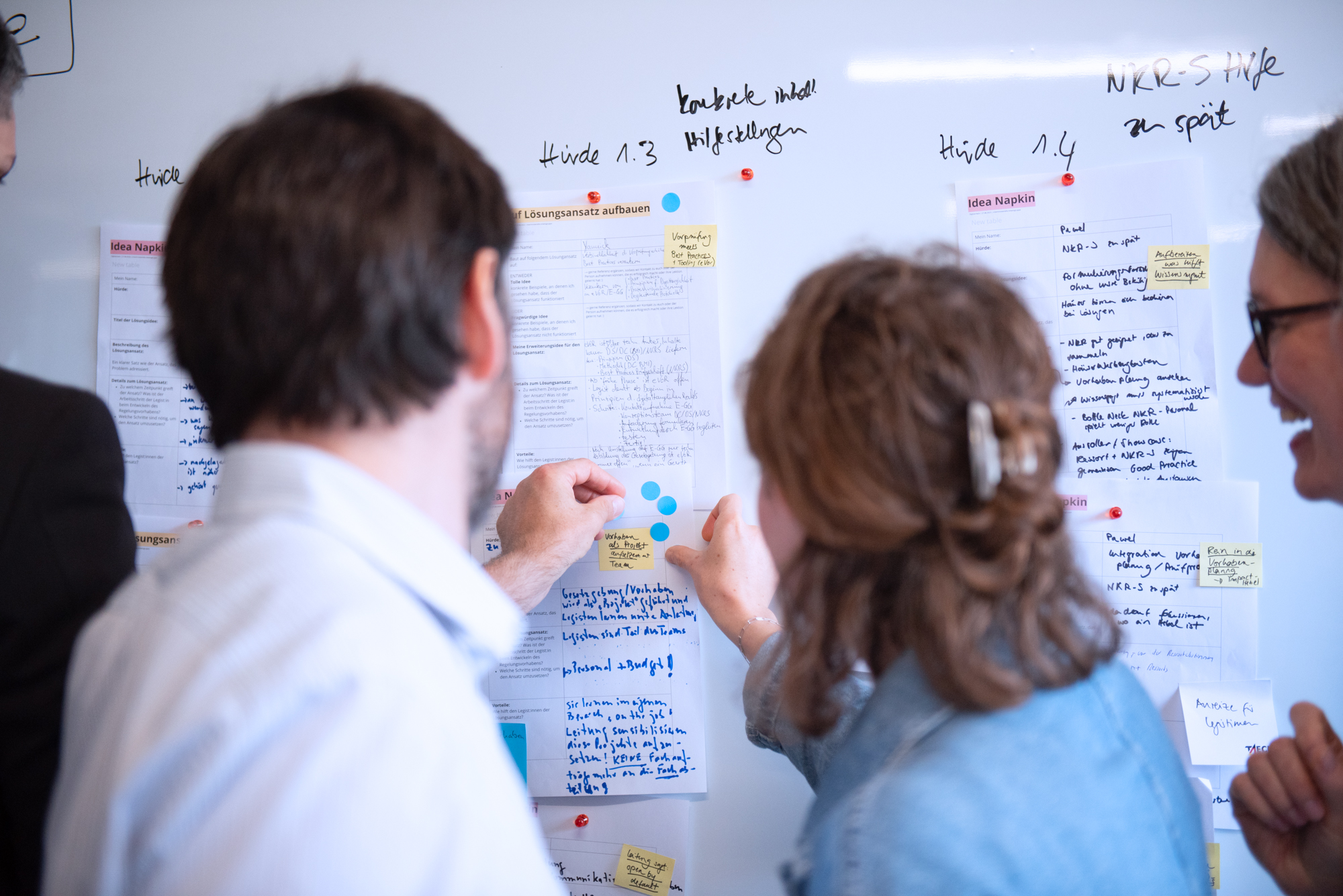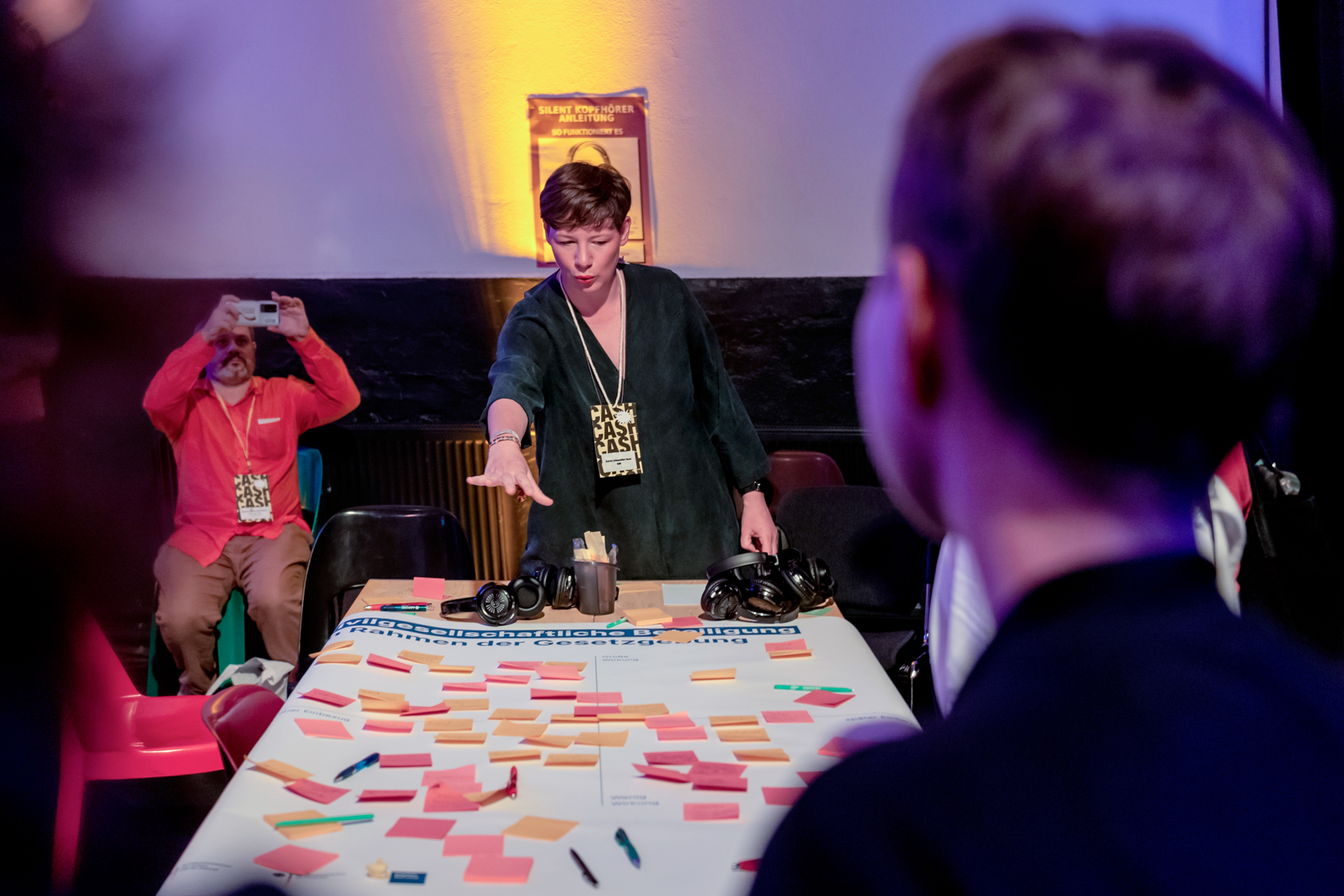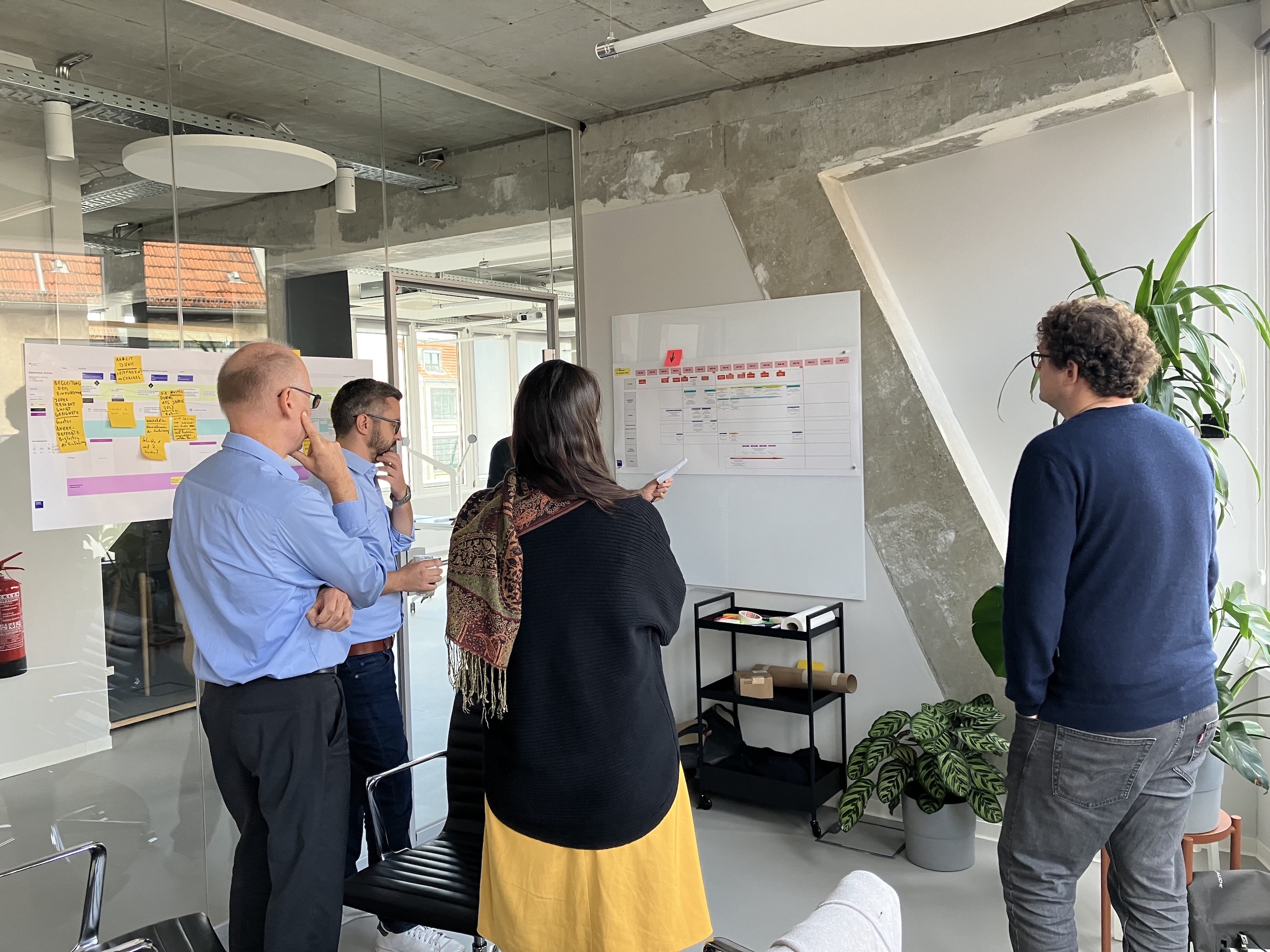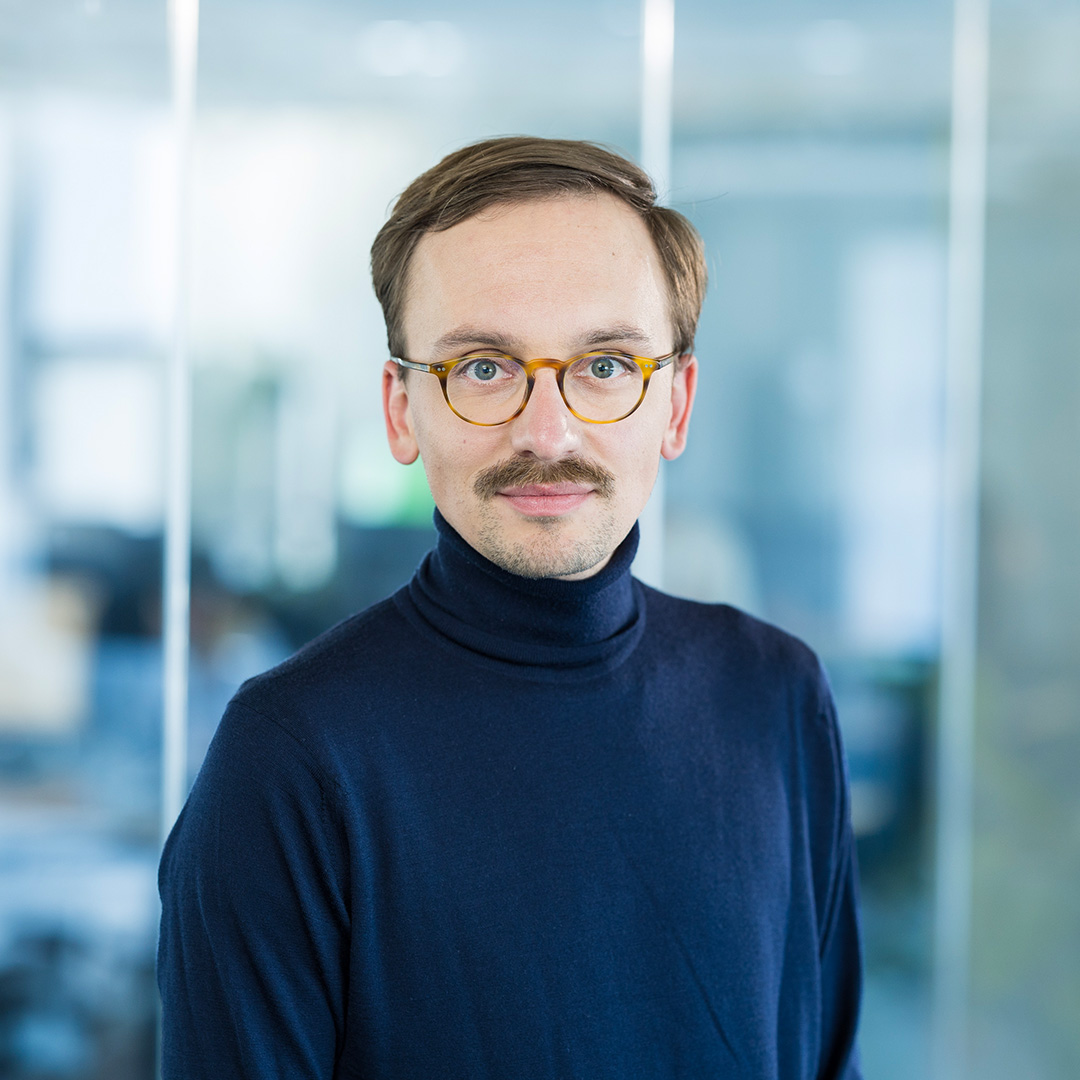

Digitalcheck: Refining the beta version step by step
The policy drafters in the federal ministries responsible for drafting laws, administrative and other regulations have been using the beta version of Digitalcheck since January 2023. To ensure that new regulations are actually digital-ready later on, it is vital to consider the requirements for and possibilities of digital execution as early as possible in the development process.
We already discussed the objectives and working principles of Digitalcheck in two blog posts in December 2022 (“Digitalcheck – Establishing the foundations for a digital state through digital-ready legislation”) and January 2023 (“Digitalcheck: Five principles for digital-ready legislation”). In this article, we look at how the interdisciplinary team from the Federal Ministry of the Interior and Community (BMI) and DigitalService has been continually developing Digitalcheck – and why we have chosen an iterative process for this.
At first, it may seem a bit strange - to say the least – to be using a beta version where legislation is concerned. So why did we go live with a minimum viable product as early as we did?
Iterative development in the complex domain of legislation
A step-by-step approach to development actually makes sense especially in the complex domain of legislation: This allows us to learn and fine-tune based on specific experiences from the practical use and operating principle of Digitalcheck. We are – after all – dealing with multifaceted challenges when it comes to Digitalcheck:
- The intended effect – to establish more and better digital services in, for example, administration – is achieved only indirectly with Digitalcheck. This is because we don’t work directly on digital services ourselves, but instead want to create the legal conditions for them. To this end, the requirements and general conditions of enforcement for the digital execution of extremely diverse legal fields have to be systematically integrated into legislative drafting.
- Our most important target group, the policy drafters, already have to deal with numerous requirements in their day-to-day work and take many other factors into account. It therefore makes sense for Digitalcheck to be developed jointly and to be integrated in their daily work on a step-by-step basis, rather than simply handing over the complete package at the end.
- The entire legislative process is both highly formalized and explicitly political.
The beta version also enabled us to provide the policy drafters in the departments with a first version of Digitalcheck in time: Since January 1, 2023, Digitalcheck has been part of the standards review carried out by the National Regulatory Control Council (German only) – abbreviated NKR – for new draft legislation.
Furthermore, DigitalService is committed to the agile and iterative approach which is already established in the field of software development. Instead of simply implementing requirements that have been defined in advance, products are refined step by step. By “facing reality” earlier, we reduce the risk of developing solutions without taking users’ needs into account. We also see an increase in flexibility and efficiency, as it is possible to react quickly to new circumstances and to detect errors at an early stage.
The iterative approach for Digitalcheck
With Digitalcheck, we were committed to a step-by-step approach from day one. Just two weeks after the project began, we had an initial definition of digital-readiness which had been put to the test in interviews with policy drafters and enforcement officers. It had also already been discussed and agreed upon across departments.

This helped everyone involved in the project to quickly become accustomed to and gain confidence in this new way of working: It was not long before we had achieved tangible results, and these were then promptly adapted to new findings and optimized.
After almost a year of working on Digitalcheck, the Digitalcheck team from the BMI and DigitalService, as well as the interdepartmental working group formed specifically for the interdepartmental development of Digitalcheck, are convinced of the advantages offered by the iterative approach – particularly in the context of improving the legislative process – and see it as an important factor for the success of Digitalcheck.
The iterative further development of Digitalcheck is based on the impact goals up to 2025 for central target groups involved in the legislative process – policy drafters in federal ministries, the NKR and members of parliament.
The concrete goals for the current year, which the Digitalcheck team has developed jointly with the interdepartmental working group, are equally important. On this basis, BMI and DigitalService evaluate the progress to date in monthly strategy meetings: Are we still on the right path? Do we need additional activities, or should we adjust or even cease ongoing activities to reliably achieve our goals? Might it make sense to readjust the goals themselves?
The development cycle in four steps
Our continued development of the Digitalcheck beta version is based primarily on findings from actual use. The development cycles each comprise four steps:

Collect data
We are continuously collecting data on the needs, challenges and opportunities of digital-ready legislation. An important source for this is our regular evaluation with policy drafters and the Secretariat of the National Regulatory Control Council (NKR) , which is responsible for reviewing Digitalcheck. Additionally, specific inquiries to our Digitalcheck support or feedback from Digitalcheck workshops with individual federal ministries as well as tests and qualitative interviews, not least with law enforcement, also provide us with informative data points.
Analyze and prioritize findings
We then collect all findings relating to problems, challenges and opportunities in our Journey Map along the legislative process, which we have depicted in the Digitalcheck Service Landscape. In this way, we gain a shared understanding of interrelationships and possible clusters, and are able to analyze and prioritize needs: What are the greatest challenges and opportunities for digital-ready legislation? How do we achieve the greatest leverage? What effect can we achieve at a particular starting point?
Check assumptions and develop potential solutions
If we do not yet fully understand a problem or lack input with regard to a need, we verify our assumptions through target-oriented interviews, tests or workshops. However, as soon as we have clarity and confirmed findings, we develop initial ideas for solutions and prototypes, which we test and adapt step by step. As soon as we have found a good solution, we can integrate it into the next version of Digitalcheck.
Evaluate and document the findings
In turn, a lot of new data and findings arise from the various tests relating to individual assumptions or potential solutions. These are incorporated into our data collection, and a new development cycle begins.
In this way, we select specific needs, develop solutions, and then evaluate whether and how Digitalcheck and the respective new version have an effect in actual use. In addition, we can systematically incorporate the perspectives of other departments through the interdepartmental working group, where we present our findings for discussion after each of the first two steps and obtain important feedback.

At the workshop “Updating Legislation: Towards Collaborative Legislative Design” at re:publica 2023, we actively sought perspectives from within civil society.
On top of the development steps described above, it is also important for us to think outside the box. In recent months, for example, we have presented Digitalcheck at major forums such as the congress Digitaler Staat (German only) and the Zukunftskongress (German only), from which we received a great number of suggestions from experts. We used our own workshop at re:publica (German only) to gather input on how we can better engage interested members of civil society.
The new role of Digitalcheck documentation
In the previous version of Digitalcheck, there was a specific need to further develop the documentation, which was previously the last step in the execution of Digitalcheck and the basis for the review by the NKR. We recognized this from our own evaluation as well as from further interviews and workshops with policy drafters and colleagues from the NKR’s Secretariat.
For policy drafters, the previous, rather brief documentation did not provide sufficient information and inspiration. The documentation was of no use to them when reflecting on the content and methodology of their assessments and decisions, to explain their plausibility, and thus to contribute to self-monitoring as well as to quality assurance. Thus, the previous documentation was not an appropriate basis for discussion with the NKR Secretariat nor for the NKR’s final review.
Working closely with the NKR Secretariat and policy drafters, we then adapted the documentation in five iterative steps and conducted two rounds of testing, each with four to five policy drafters.

In the current iteration of the documentation, policy drafters are given more freedom to provide nuanced answers as well as additional hints and tips for completing the documents.
As a result, the documentation is no longer simply the final step undertaken by policy drafters at the end of the development process. Instead, the accompanying documentation now provides policy drafters with better assistance in drafting digital-ready regulations.
The new version 1.2 also includes more concrete guidance on how to create process visualizations using a flowchart and specific elements that can be applied. In addition, there is the note “This is what the NKR checks”, the option for nuanced answers and concise tips for completion – for example, to refer to individual paragraphs, where applicable also in other regulations.
We published the current version of Digitalcheck (German only) just a few days ago and documented all changes in the version history (German only).

Two focus themes for the next steps of iterative development
Now that we have evaluated the data, prioritized needs and starting points and coordinated with all project partners as described above, we will be working on two focus themes for the next iteration in the following months.
We will continue to address the topic of visualization: How can visualization and modeling increase the practicality of new regulations? The second focal point is on providing the support currently not available to policy drafters for drafting digital-ready regulations, such as access to relevant experts.
Read more on the topic






